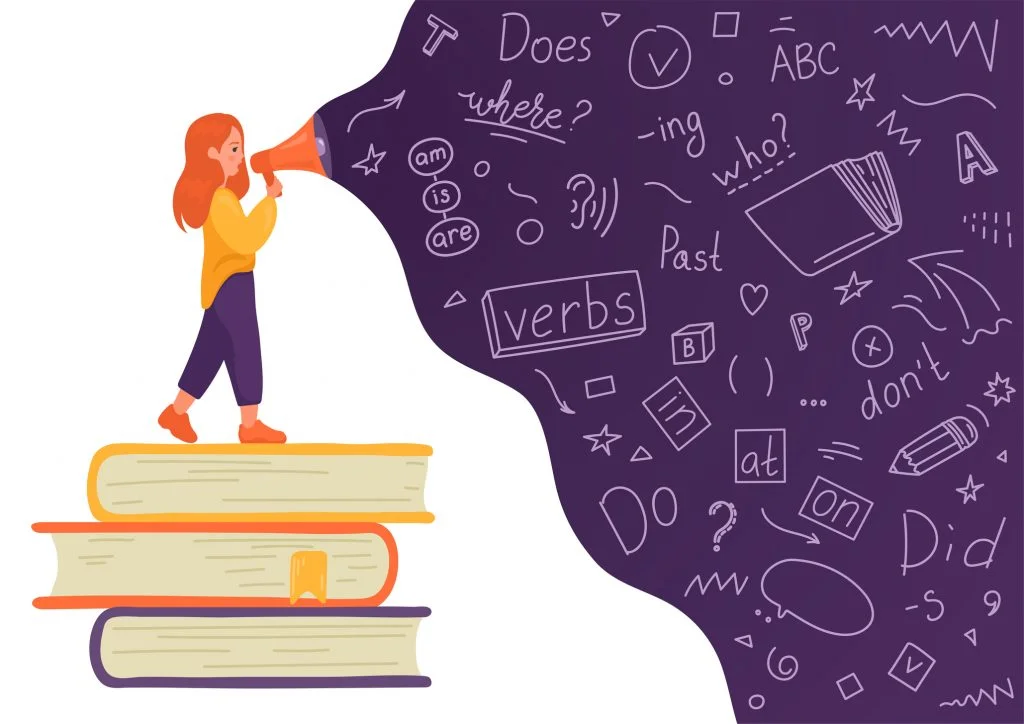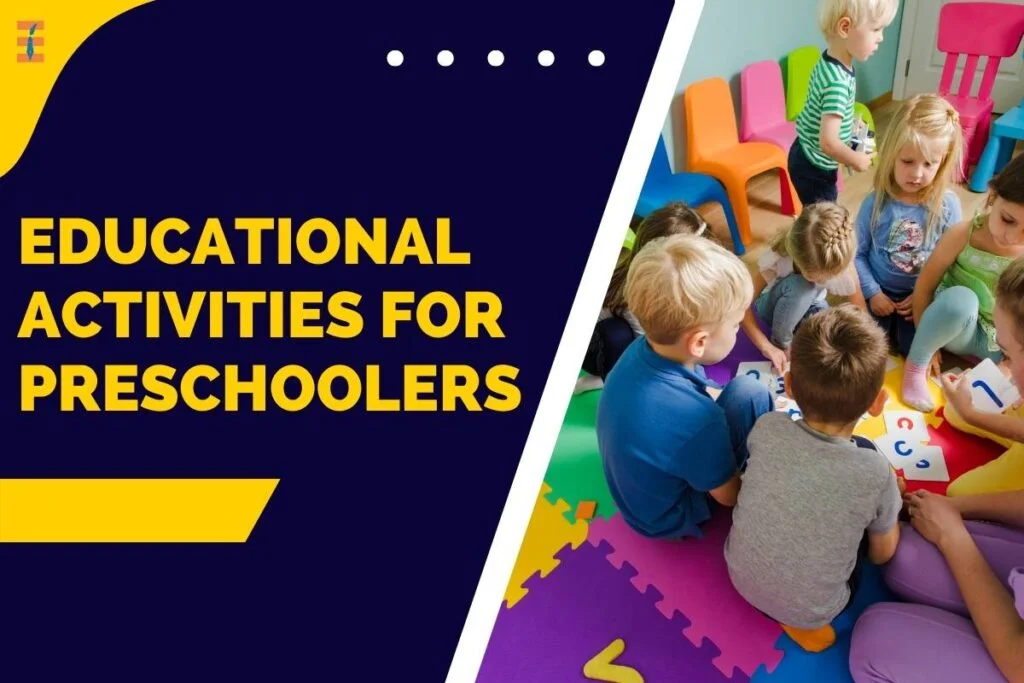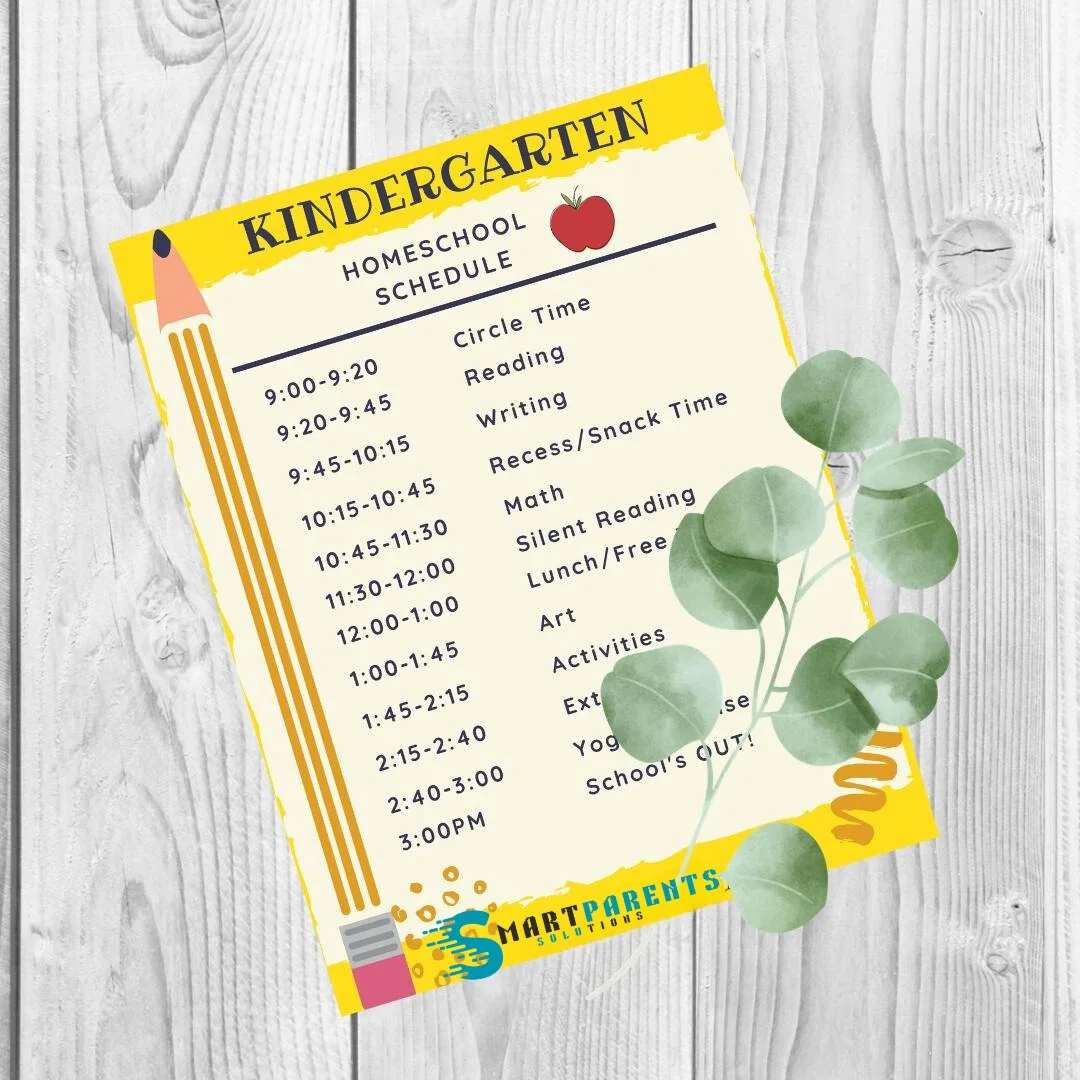It is a great experience teaching kindergarten at home, which may be flexible and individually tailored. By making use of the right resources and approaches you can create an engaging learning atmosphere which promotes both academic growth plus emotional development.
This piece explores homeschooling for kindergarten in depth, touching on some crucial aspects like curriculum planning, daily schedules, educational activities among others. Whether new to the practice or looking forward to improving what has been done so far there are some valuable tips that will help make your child’s JK year a success.
Understanding homeschool kindergarten
What is Homeschool Kindergarten?
Homeschooling kindergartens refer to an educational approach where parents take up the challenge of educating their children who have not reached the age of five years at home rather than taking them to public schools. Through this method, parents come up with personal syllabuses and flexible ways of learning suited for their children’s needs, preferences and pace.
It also includes aspects of education that are geared towards individual students including practical life skills. The primary purpose is to inspire love for learning as well as position the child for later academic achievement.
Benefits of Homeschool Kindergarten
Individually Oriented Learning
- Design lessons to meet the needs of your child’s abilities, interests, and ways of learning.
- Give extra help in areas where your child is weak and allow them to advance faster in areas where they are strong.
- Create a learning situation that adapts itself to the pace of your son and therefore helps him grasp his subjects better.
Open Schedule
- Develop an everyday programme which suits your family’s way of life, allowing for interruptions such as holidays, breaks or special events without interrupting teaching.
- Integrate education into daily living by capturing all unexpected teaching opportunities that arise within the house.
- Times for learning should be adjusted according to when a child has more energy and can concentrate best during lessons.
Closer Family Bonds
- Spend more time as a family, thus nurturing a more intense parent-child relationship.
- This promotes family communication and teamwork through joint projects and other activities.
- Create shared experiences involving educational activities that could last forever in one’s memory while deepening emotional intimacy between children and parents.
Secure Learning Environment
- Direct what happens in the home school so that it is safe, supportive, and free from negativity or distractions.
- Tailor-make this part to accommodate any unique conditions or sensitivities that may affect your boy for instance noise reduction experiment apparatuses if he is noise-sensitive etc.
- Avoidance from gangsterism oppression or intimidation is also likely since most bullying cases occur at public schools among peer groups among other things.
Encourages Lifelong Learning
- Foster a positive attitude toward learning by making it engaging and enjoyable.
- Instill a sense of curiosity and a love for discovery that can motivate lifelong educational pursuits.
- Allow your child to explore topics of interest more deeply, encouraging independent research and self-directed learning.
Creating a curriculum
Putting together a homeschool curriculum for kindergarten involves selecting and organizing subjects and activities for your child that meet his or her educational requirements, interests and learning style.
Curricula that are holistic should feature core academic subjects with an inclusion of supplementary subjects.
Here is a detailed guide to creating an effective homeschool kindergarten curriculum
Core Subjects
Literacy and Language Arts
At this stage, it is important to develop the foundational skills of reading, writing, listening, and speaking.
Reading
- Phonics Introduction: Introduce phonics by starting with simple sounds and letters. Use flashcards, interactive apps, and phonics games to make learning fun.
- Sight Words: Include sight words in order to build vocabulary. You can help yourself with lists of sight words on flashcards or by giving examples like Sight Word Bingo.
- Easy Books: Start out with picture books then progress to easy readers. Books that have repetitive text and pictures which extend the story build confidence in reading as well as interest in books.
Rewriting
- Handwriting Practice: Concentrate on the correct manner of griping a pencil and forming letters. Use tracing worksheets, sensory writing trays, and other exciting activities like moulding alphabets with dough.
- Letter Formation: Educate kids in upper case and lower case lettering. Consistently give them the opportunity to write by assigning written exercises as well as interactive games.
- Simple Sentences: Urge children to write simple sentences progressively. Begin with controlled sentence structures then proceed to unaided writing. Maintain journals or story books where they can draw and then write stories about whatever they have observed.
Listening and Speaking
- Storytelling: Initiate daily storytelling episodes. Make your child describe pictures or imagine stories. Story starters or picture cards are good examples of such aids that could be used for motivating creativity.
- Conversations: Employ conversations to develop listening and speaking skills on a daily basis. Speak with your child about everyday occurrences, have him/her read aloud for you, and question him/her using open-ended questions so that expressive language grows easily.
- Rhymes and Songs: To improve auditory processing abilities, incorporate nursery rhymes and songs in your program for preschoolers, strengthening phonemic awareness. Have favorite songs and rhymes that can be practiced regularly.

Mathematics
It is crucial to build basic math skills through interactive and practical activities.
Counting and Number Recognition:
- Everyday Objects: For counting exercises, use common objects such as playthings, buttons, or snacks. Play counting games for instance while climbing steps count your steps or when doing grocery shopping.
- Number Games: Engage in number games and count the numbers with apps. Stick a tape of numbered line on the floor and jump at the right spot.
- Visual Aids: Utilize numeral charts, looking-cards, as well as number books to reinstate recognition.
Basic Addition and Subtraction:
- Manipulatives: Teach simple addition and subtraction by using counters such as beads, blocks, or small figures. Generate word problems that you can solve together involving these stuffs.
- Interactive Games: Use board games or digital applications aimed at teaching fundamental mathematical operations. E.g. Domino addition or bowling – subtraction so that learning becomes more fun making it interesting too.
- Daily Activities: Involve mathematics in everyday life e.g., setting up the table (counting plates) and cooking (measuring ingredients).
Shapes and Patterns:
- Shape Hunts: to help recognition, use puzzles and shape sorters for children to identify shapes in their environs having conducted several shape hunts around the house or neighborhood.
- Pattern Activities: develop patterns through colored beads, drawings or blocks. Allow your child to produce and discern various other types of patterns using different objects.
- Art Integration: incorporate shapes in art projects such as the creation of geometric pictures, sand paintings and drawing patterns on a piece of paper.
Science
Hands-on experiments and exploration that cultivate interests about the natural world is very important.
Nature Studies:
- Investigate Plants and Animals: Explore local parks, gardens, nature trails to discover plants with their characteristics discussed; also discuss animals’ habitats. Apart from that keep a nature journal where you record your observations.
- Weather Exploration: Make notes on weather changes as well as create weather chart. Discuss how different seasons cause environment alterations.
- Gardening Projects: Start small garden by growing plants indoors involving the child in planting seeds watering them down and observing growth at every stage.
Simple Experiments:
- Safe Experiments: Perform easy experiments to understand fundamental scientific ideas. For example, blend baking powder with vinegar and watch the reaction occur or use a prism to make a rainbow.
- Kitchen Science: Use household items for experimenting like observing how different substances dissolve in water and making homemade playdoughs.
- Observation Skills: Enhance observation skills by exploring different materials and their properties through touch and sight.
Observation Skills
- Nature Journal: Children should be encouraged to keep nature journals where they can document daily or weekly observations. Drawings of plants, notes about animals seen, and questions they might have are among the things which may be included in these journals.
- Observation Games: Engage children in games that require attention to detail when looking at objects. That is why we sometimes use binoculars or magnifying glasses to look more closely at something.
- Seasonal Studies: Observe and record changes of plants, animals and weather across the year until it comes full circle.

Social Studies
Foundational knowledge of community, history, and geography helps in understanding the globe.
Community Helpers:
- Professional Professions: Familiarize yourself with various professions and how they are important to the community. Explore different jobs by using books, videos and role playing activities.
- Field trips: Instead of taking your child to a fire station or post office, organize visits to these places where he can meet community helpers and understand their roles in the society.
- Role playing: Let children engage in role-playing games; for instance, pretending to be doctors or police officers.
Family and Traditions:
- Family Backgrounds: Talk about your family background as well as cultural practices. Create a family tree showing relatives involved in family history.
- Cultural Immersion: Expose kids to traditions from other cultures through reading materials, cooking sessions or celebrations. Also encourage them to talk about their own traditions and learn from others.
- Narrative Sharing: Share family stories accompanied with photos highlighting what each event denotes concerning customs among others.
Maps and Globes:
- Easy Maps: These involve simple maps in your home, neighborhood or town. Use practical maps such as those used in trip planning or searching for places.
- Basic Geography: Some physical features like rivers, mountains, oceans are examined here. Identify different countries and continents using globes and maps.
- Interactive Activities: These include puzzles, games about map skills and geographical concepts.
Supplementary Subjects
Art and Music
Artistic activities that allow children homeschool kindergarten to be creative and express themselves enhance learning.
Drawing and Painting:
- Art Supplies: Have a variety of art supplies e.g. crayons markers paints colored pencils etc. Create an area dedicated to art where your child can feel free to make pictures.
- Guided Projects: Offer guided projects related with themes or prompts. Let them experiment with various techniques such as watercolor painting or collage making also.
- Display Art: Hang their artwork on a gallery wall. This will make them feel more comfortable with their own work as well as increase respect for their own creativity.
Music and Rhythm
- Musical Exploration: Experiment with different musical instruments and sounds. Introduce some basic instruments such as tambourines, maracas, xylophones.
- Rhythm Games: Follow rhythm games and sing along songs to enhance musical abilities. Use clapping, tapping and simple musical instruments to experience different rhythms.
- Music Appreciation: Listen to music from various genres and talk about how it feels. Make a playlist of favorite songs that includes movement and dancing.

Physical Education
It is important to ensure children grow healthy by promoting their physical health through regular exercise and play.
Movement Activities:
- Active Play: This can be as simple as jumping around, running or dancing on a daily basis. Create obstacle courses or use dance videos for your kid’s movements.
- Structured Exercise: Incorporate structured exercise activities like yoga or simple aerobics. Utilize videos or apps tailored for young children.
- Outdoor Activities: Encourage outdoor play including biking, hiking or playing at the park. Set up swings, slides or sports equipment at the backyard play area.
Sports:
- Teach Basic Skills: Initiate basic sports skills and games. Practice throwing balls and catching them, kicking balls, and dribbling with balls.
- Team Games: Arrange for some simple team games you can play with your brothers or sisters like relay races or soccer.
- Skill Development: Concentrate on developing skill and coordination by playing activities such as hopscotch or jump rope.
Practical Life Skills
Independence and responsibility are developed through teaching everyday skills.
Chores:
- Household Tasks: Encourage your child to participate in simple household tasks like setting the table, sorting laundry, or watering plants. Utilize chore charts to record duties.
- Routine Chores: Identify a routine where daily chores have been planned. A time-table that contains things like making beds, arranging toys back into their shelves and assisting in lunch preparation should be devised.
- Reward System: Establishing an incentive scheme would encourage participation. Distribute stickers or small rewards if chores are fully done.
Personal Care:
- Toilet Routines: Enact hygiene and self-care habits, such as brush teeth, wash hands and take a bath. Provide your child with a visual tick off chart to be followed through in his daily routines.
- Dressing Skills: Train them how to dress themselves by assisting them in selecting clothes and allowing them to practice buttons, zippers, and shoe laces.
- Health Awareness: Discuss fundamental health principles like the importance of good nutrition, exercise for fitness and enough sleep. Let him or her choose healthy snacks and understand what makes up a balanced meal.
Sample Kindergarten Curriculum Outline
| Subject | Weekly Focus | Resources |
| Literacy | Phonics, Sight Words, Storytelling | Phonics Books, Flashcards, Storybooks |
| Mathematics | Counting, Basic Addition, Shapes | Manipulatives, Worksheets, Puzzles |
| Science | Nature Studies, Simple Experiments | Nature Journal, Experiment Kits |
| Social Studies | Community Helpers, Family Traditions | Picture Books, Maps |
| Art and Music | Drawing, Music Exploration | Art Supplies, Musical Instruments |
| Physical Ed. | Movement Activities, Basic Sports | Play Equipment |
| Life Skills | Chores, Personal Care | Chore Charts, Hygiene Kits |
Daily Schedule and Routine
Setting Up A Routine
Having a consistent daily schedule allows children to know what is expected of them and provides balance between learning time and playing time.
Sample Daily Schedule
| Time | Activity |
| 8:00 – 8:30 | Morning Routine/Breakfast |
| 8:30 – 9:00 | Circle Time/Calendar |
| 9:00 – 10:00 | Literacy Activities |
| 10:00 – 10:30 | Snack Break |
| 10:30 – 11:30 | Math Activities |
| 11:30 – 12:00 | Science Exploration |
| 12:00 – 1:00 | Lunch and Free Play |
| 1:00 – 2:00 | Art/Music/Physical Ed. |
| 2:00 – 2:30 | Story Time/Read Aloud |
| 2:30 – 3:00 | Practical Life Skills |
| 3:00 – 3:30 | Outdoor Play/End of Day |
Flexibility in Homeschooling
Being flexible in homeschooling offers the possibility of adjusting learning experience according to one’s family’s unique needs. Parents may come up with a timetable that goes along with their child’s natural body rhythms hence enabling education when the child is most alert.
This can also allow concentration on areas where the child shows interest or is not grasping thus creating an individualized stress-free learning atmosphere as well. Furthermore it makes it possible for families to include real life experiences into education which adds value making learning more purposeful.
Engaging Educational Activities

Literacy Activities
- Sound Games: Learning with cards or apps to make it enjoyable.
- Picture Stories: Encourage your child to use pictures when telling their stories.
- Reading Time: Have a specific time for reading every day.
Math Activities
- Counting Games: Use common things for practicing counting.
- Shape Hunts: Around the house or neighborhood, look for shapes.
- Simple Puzzles: Integrate puzzles to build problem-solving abilities.
Science Activities
- Walks in Nature: Explore local parks and document findings,
- Simple Experiments : Try kitchen science experiments.
- Observation Projects : Observe and record weather patterns.
Art and Music Activities
- Craft Projects: Create crafts that are relevant to seasons or themes of interest to children.
- Music Exploration: Experiment with different instruments and sounds.
- Drawing Challenges: Provide prompts for drawing exercises that have been given by teachers or parents during art classes at school or home schooling sessions done by guardians or/and parents within families
FAQ about homeschool kindergarten
What is the age for homeschool kindergarten?
For most, kids start kindergarten at five years old although through homeschooling you can choose to begin either earlier or later based on your child’s preparedness.
How do I track my child’s progress?
To assess how well your child is doing in school, you need to observe and keep records of his activities. Sometimes, formal assessments are also important.
Can I work as a full time employee and still manage homeschooling of my child in kindergarten?
Certainly! Many parents are able to home school while engaged in other employment. The best way to go about it is having flexible hours and doing some work during evenings or weekends.
What happens if my kid has difficulty with one subject?
Instead of dwelling on the problem itself, think about its root cause and adjust your tactics accordingly. Look for other sources of information or ask people who have been through what you are going through now.
Must I follow a structured learning program exclusively?
Not necessarily; you can modify the syllabus according to your learner’s personal requirements and inclinations. Nonetheless, this approach seeks to strike a balance between educational achievement and adaptability.

Russell F. Jones, holding a Master in psychology from the University of Florida. He writes for Smart Parent Solutions, offering practical advice on parenting and child development. His engaging content helps parents navigate family life with confidence and ease. Russell enjoys sharing his knowledge and spending quality time with his family.
